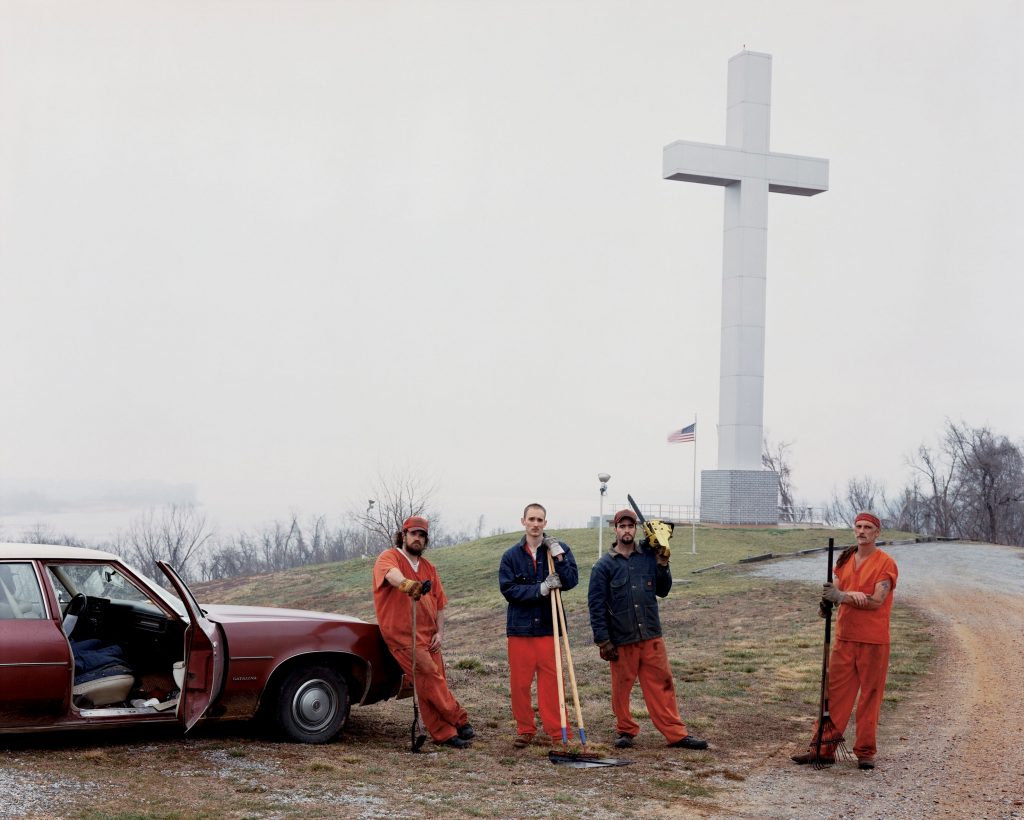Soth’s photographs are the physical output of the artist’s journey, but the Mississippi river is the invisible driving force silently moving the series towards emotional significance.
Sleeping By the Mississippi, Alec Soth’s first photobook, was created while the artist was on the brink of giving up his creative ambitions. First published in 2004, the volume is now thought of as Soth’s landmark publication, widely celebrated for its melancholic exploration of the Southeastern US. Having just spent a harrowing month-long period living with his sick mother-in law-up until her death, Soth approached this project as an ‘morose, introverted’ 20 year old, self-identifying as painfully shy. Adopting the tradition of influential American road-trip photographer Robert Frank, Soth began to follow the Mississippi river in his car. With little to no research or prior organisation, Soth progressed throughout the state ‘using the river as a route to connect with people along the way’.
The photographer noticed subtle changes as he moved further south, commenting that the further he travelled, the warmer and more open the region’s atmosphere became. Miraculously, Soth’s shyness did not restrict his artistic output, but rather afforded him with a non-confrontational and easygoing approach when capturing his subjects. Equipped with a large format box camera and tripod, Soth was welcomed into many people’s homes and lives, documenting an intimacy within the private spaces he frequented throughout his journey. Soth isn’t entirely comfortable with his portraiture, seeing it as exploitative in many ways. Yet, the Mississippi inhabitants let him into their lives, and he responded by creating deeply personal and gritty photographs.
While Sleeping by the Mississippi is clearly dominated by portraiture, the series is equally pervaded by subtler references to religion, decorating the collection with a loaded and mythical significance. We see images identified by the Christian liturgical calendar, such as Ash Wednesday and Palm Sunday. Fort Jefferson Memorial Cross (2002) depicts four prisoners standing alongside a towering crucifix. The powdery grey sky looms over the scene, without a cloud or patch of colour in sight. Executed in the same colouration, the stone-grey cross appears to melt into view, erected 90 feet tall so as to be seen as far as Missouri, Illinois and Kentucky. Standing with tools in hand, the four men in orange workwear are somewhat disparate to the scene, gazing at the camera in a confrontational manner. These men are the gatekeepers of the image, their presence protective. Situated in the foreground of the image, one must observe the earthy tones of red, orange, and brown weighing down the bottom of the composition. So too, one must pass over the men’s adversarial stares in order to look beyond at the memorial. In this sense, the four prisoners force us to consider their presence before we are able to acknowledge the memorial itself.
Soth’s Sleeping by the Mississippi is particularly meaningful as it lays its journey across a geographical body. The series has a greater purpose, a meaning bigger than itself that dictates and directs where it goes and in which way it moves. Soth’s photographs are the physical output of the artist’s journey, but the Mississippi river is the invisible driving force silently moving the series towards emotional significance
(By Eleanor Lerman)
